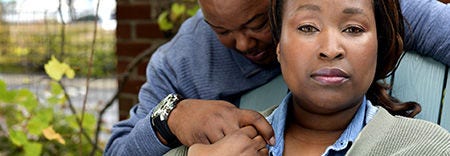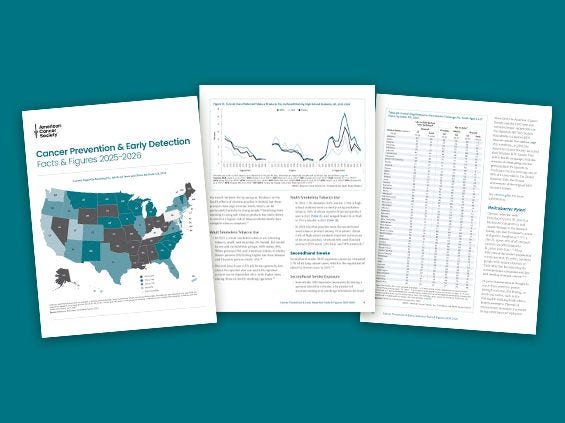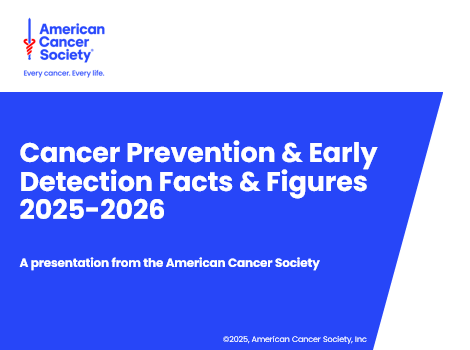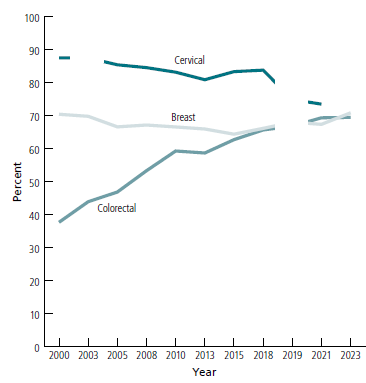Cancer Prevention & Early Detection Facts & Figures
The Cancer Prevention & Early Detection Facts & Figures, 2025-2026 is an educational companion for “Prevalence and review of major modifiable cancer risk factors, HPV vaccination, and cancer screenings in the United States: 2025 update,” a scientific paper published in Cancer Epidemiology, Biomarkers, and Prevention.
Every person can take two actions to greatly reduce their risk of developing and dying from the most common types of cancer in the United States:
- Make efforts to reduce those harmful everyday habits that increase the risk of developing cancer.
- Follow the guidelines for recommended cancer screenings.
In the United States for 2025, 44% of the 618,120 cancer deaths estimated to occur are expected to be attributable to cancer risk factors that are all potentially modifiable. For instance, people can make efforts to change their lifestyle to reduce the risk of cancer from:
- Cigarette smoking
- Secondhand smoke exposure
- Excess body weight
- Alcohol intake
- Unhealthy diet
- Physical inactivity
- Ultraviolet radiation exposure
- Cancer-associated infections
Cancer screening tests can also help prevent thousands of additional cancer cases and deaths.
This Facts & Figures report provides the latest data and information on the:
- Most common risk factors for cancer that can potentially be modified
- Preventative vaccinations
- Use of cancer screening tests
- Social, economic, and public policy factors that profoundly influence a person’s behaviors
See the press release: “Latest ACS Cancer Prevention and Early Detection Report: Smoking Rates Continue Historic Drop, but Cervical Cancer Prevention is Lagging”
Citations, Credits, & Permissions
Suggested citations: Cancer Prevention & Early Detection Facts & Figures 2025-2026. Atlanta: American Cancer Society; 2025-2026.
Please note that any reproduction or re-use should credit the appropriate American Cancer Society Cancer Prevention & Early Detection Facts & Figures publication and include a statement of copyright.
Glossary for Nonscientists
Featured Term:
Health care barriers
Factors that prevent a person from getting to (accessing) quality health care and services. Examples of health care barriers include lack of adequate health insurance, distant location of health centers, lack of transportation, and no, or limited, paid or unpaid time off from work.







